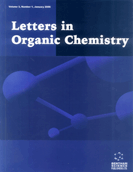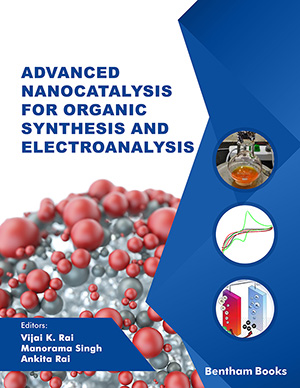Abstract
Aim: Computational Quantum and Spectroscopic analysis of 4-Hydroxy-1-Naphthaldehyde Background: Known also as 4-Hydroxynaphthalene-1-carbaldehyde, 4-hydroxy-1-naphthaldehyde (4H1NA) is a crucial precursor of many coordinating agents. A commercial compound called 4- hydroxy-1-naphthaldehyde (4H1NA) can be used to make a number of different sensors. In the development of many chemosensors, they operate effectively as a functionalized fluorescent backbone.
Objectives: Molecular Dynamic, Hirshfeld Surface, Computational Quantum analysis of Naphthaldehyde.
Methods: The methods employed in the analysis of the compound involve the DFT calculations, using the DFT method and B3LYP/6-311++G (d, p) basis set with respect to its FTIR, NMR, and UVVisible spectrum. The NMR chemical shifts of carbon and protons in CDCl3 were determined by the GIAO method. For the molecule of reference, HOMO-LUMO and Donor-Acceptor interactions were also taken into consideration. Investigations also looked into E.L.F., Fukui activity, and non-linear optical properties.
Results: The investigation of compounds at their atomic level was analyzed using computational methods so that chemical, medicinal, and environmental research make use of them to make the molecule more in an improved form with distinguished properties. Strong interaction has been produced as a result of electron transfer from the oxygen atoms lone pair LP (2) to the anti-bonding orbital *(C3- C5) with a significant stabilization energy of 42.61 kcal/mol. The attributes of the NLO molecule were calculated and found to be superior to those of the urea molecule, with linear and first-order hyperpolarizability situations. Our findings imply that the reference molecule can be a heavier contender for NLO as a surface material and could be considered a vital substance for medical purposes in the drug industry due to its maximum electrophilicity index.
Conclusion: A commercial compound called 4-hydroxy-1-naphthaldehyde (4H1NA) can be used to make several different sensors. The compound has good structural and optical properties. They can be employed for a variety of optical limiting applications because of their unusual optical characteristic, which exhibits third-order non-linear behavior.
Keywords: Molecular dynamic, computational study, quantum analysis, FTIR, HNMR, 4-hydroxy-1-naphthaldehyde (4H1NA).
[http://dx.doi.org/10.15227/orgsyn.022.0063]
[http://dx.doi.org/10.1016/j.saa.2012.12.067] [PMID: 23352919]
[http://dx.doi.org/10.1039/c2an35854a] [PMID: 23014158]
[http://dx.doi.org/10.1016/j.optmat.2013.11.009]
[http://dx.doi.org/10.1002/pssa.200404336]
[http://dx.doi.org/10.1016/j.jcrysgro.2019.01.017]
[http://dx.doi.org/10.1039/C5NJ00089K]
[http://dx.doi.org/10.1039/c3an36697a] [PMID: 23389672]
[http://dx.doi.org/10.1039/C7NJ04595F]
[http://dx.doi.org/10.4236/ijoc.2013.33A008];
b) Mehta, B.H.; Desai, Y. Study on Copper (II) complexes of Schiff’s bases. Orient. J. Chem., 1999, 15, 139.;
c) Bell, T.W.; Hext, N.M. Supramolecular optical chemosensors for organic analytes. Chem. Soc. Rev., 2004, 33(9), 589-598.
[PMID: 15592624]
[http://dx.doi.org/10.1016/S0022-2860(01)00742-6]
[http://dx.doi.org/10.1007/BF00549096]
[http://dx.doi.org/10.1016/j.rechem.2023.100763]
[http://dx.doi.org/10.1063/1.1654850]
[http://dx.doi.org/10.1063/1.464913]
[http://dx.doi.org/10.1103/PhysRevB.37.785] [PMID: 9944570]
[http://dx.doi.org/10.1063/1.460447]
[http://dx.doi.org/10.1016/j.saa.2013.08.049] [PMID: 24161844]
[http://dx.doi.org/10.1016/j.saa.2015.03.068] [PMID: 25813170]
[http://dx.doi.org/10.1002/qua.21839]
[http://dx.doi.org/10.1016/j.saa.2012.11.032] [PMID: 23274252]
[http://dx.doi.org/10.1063/1.458517]
[http://dx.doi.org/10.1021/cr030085x] [PMID: 16218571]
[http://dx.doi.org/10.1063/1.1749394]
[http://dx.doi.org/10.1021/jp970620v]
[http://dx.doi.org/10.1016/j.bmc.2005.03.011] [PMID: 15848752]
[http://dx.doi.org/10.1016/j.molstruc.2016.05.076]
[http://dx.doi.org/10.1039/C3CE42286K]
[http://dx.doi.org/10.1039/C8DT04127J]
 8
8 2
2
























